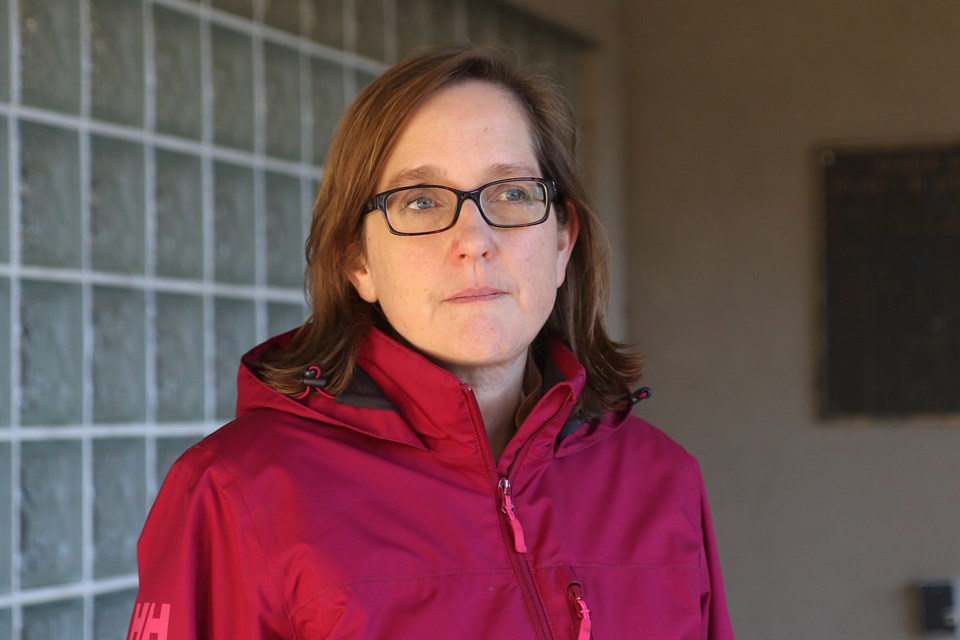THUNDER BAY - The number of daily COVID-19 cases continues a slow decline across the Thunder Bay District, but the easing of restrictions across the province could result in that decline slowing and cases rising again.
“That could actually reduce the speed at which we are declining,” said Dr. Janet DeMille, medical officer of health with the Thunder Bay District Health Unit. “There could be an increase in cases or COVID activity as a result of that and then it will continue the decline.”
Social gathering and capacity limits at businesses and events across the province were increased on Thursday, four days ahead of the scheduled next phase of reopening.
DeMille said she did not have a problem with easing these restrictions ahead of schedule, though she is nervous about entering further reopening phases earlier than scheduled, including plans to scrap proof of vaccinations on March 1.
“I prefer the original path which would have delayed some of the next steps until March 14,” she said. “I think that would have given us a little more time to navigate the current reopening and a little more time after that.”
“I do feel a little bit nervous about the next step happening on March 1 instead of March 14. The longer time period between those steps would have allowed us to monitor any increase in COVID activity and allowed us to continue to see a further drop.”
According to the Thunder Bay District Health Unit COVID-19 data, there are currently 282 active lab-confirmed cases in the district, as well as 47 people in hospital, 11 of which are in the intensive care unit.
And while DeMille says the number of confirmed cases is just the tip of the iceberg due to testing limitations, the district has still fared rather well during the Omicron wave.
“I think we are navigating this quite well and navigated the reopening quite well,” she said.
“I am actually feeling overall encouraged with our case numbers and the situation here in Thunder Bay and in some ways in the district communities. I know there are clusters where the virus is spreading more and I am particularly concerned with First Nation communities where there is more spread.”
The Omicron wave likely peaked in the district during the second week of January and based on data collected, including wastewater surveillance, there has been a slow, but steady decline in cases since that time.
However, DeMille said there is still a lot of COVID-19 activity in the district and First Nation communities, which is cause for concern.
“There’s still a lot of COVID around. Even when reopening,” she said. “It is going down. Our numbers are still showing a fair number of people testing positive for COVID and we are encouraging people to take all those protective measures.”
DeMille did not take the same stance as her counterpart in the Northwestern Health Unit, Dr. Kit Young Hoon, who is recommending businesses, organizations, and residents continue to utilize enhanced COVID-19 measures due to the region having one of the highest infection rates of the virus in the province.
“At this time, there are a lot of measures already in place. I am certainly recommending businesses and workplaces and even individuals really maintain a high level of vigilance in the measures that we all know reduce the risk of COVID spreading,” DeMille said.
“I certainly don’t want to put any additional restrictions and I don’t think they are warranted, aside from the smaller ones we have put in place. I think overall we are navigating the Omicron wave fairly well.”
One of the reasons the district has been able to navigate this wave so well is the high vaccination rate, including booster shots, with 60 per cent of the population over the age of 18 having received a third dose.
But DeMille would like to see that number increase further, particularly for those who may be at greater risk of developing complications from COVID-19, such as immunocompromised individuals and those over the age of 60.
“Ideally, we want people who are more at risk due to their age to get a booster dose,” she said. “That is one of the biggest groups I would like to see come forward.”
The health unit will continue to operate its vaccination clinic at the CLE Coliseum, offering walk-in appointments for all doses. It has also recently finished a series of vaccination clinics in schools and is planning further clinics to target vulnerable populations.
And while cases numbers are slowly declining, a drop in the high number of hospitalizations may take even longer.
“As our numbers get lower, that will help the number of those who do get seriously ill and require hospitalizations will get lower,” DeMille said. “Hopefully we will navigate through this and the pressure on the acute care system will decline, but it may feel the pressure for a little time yet.”
